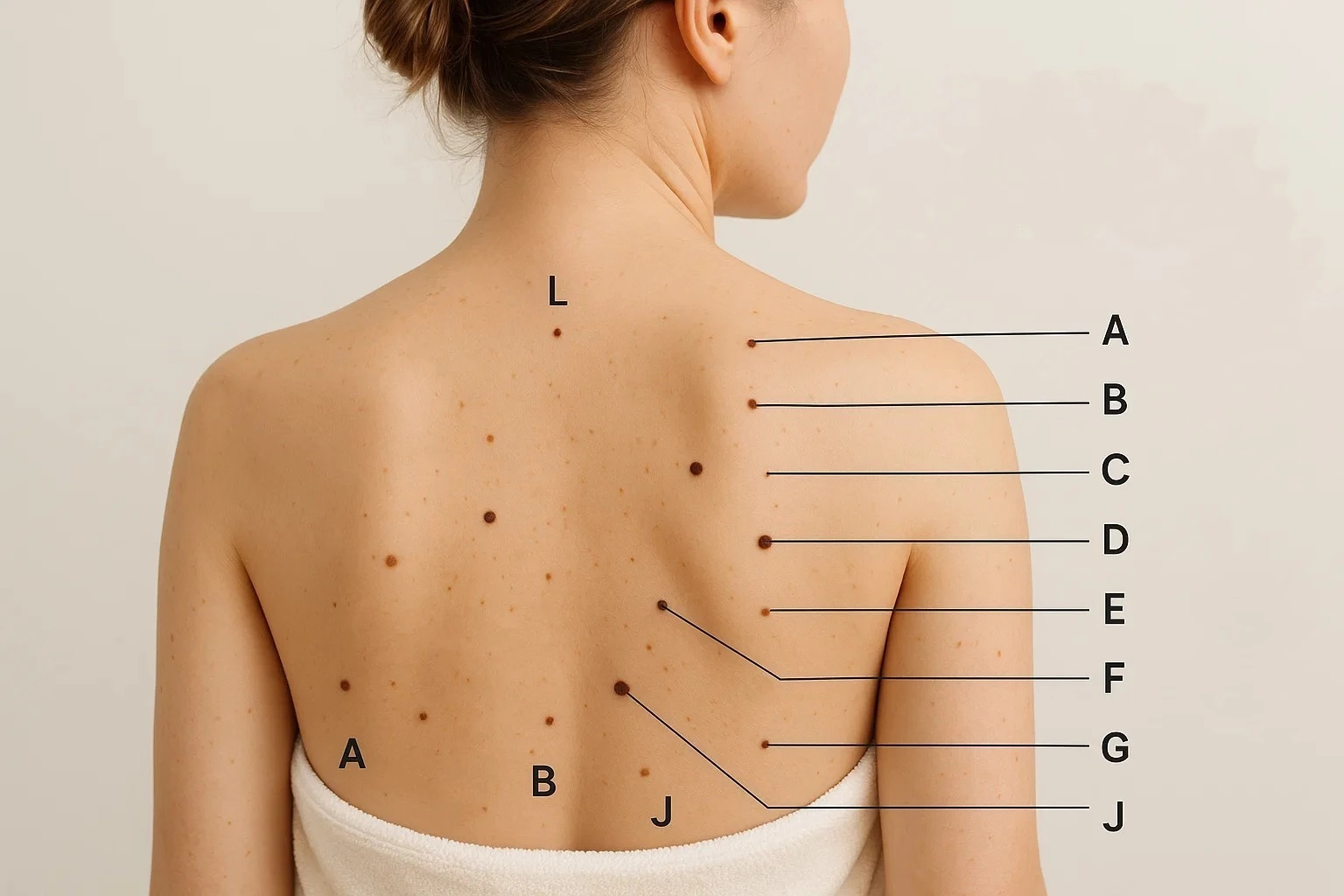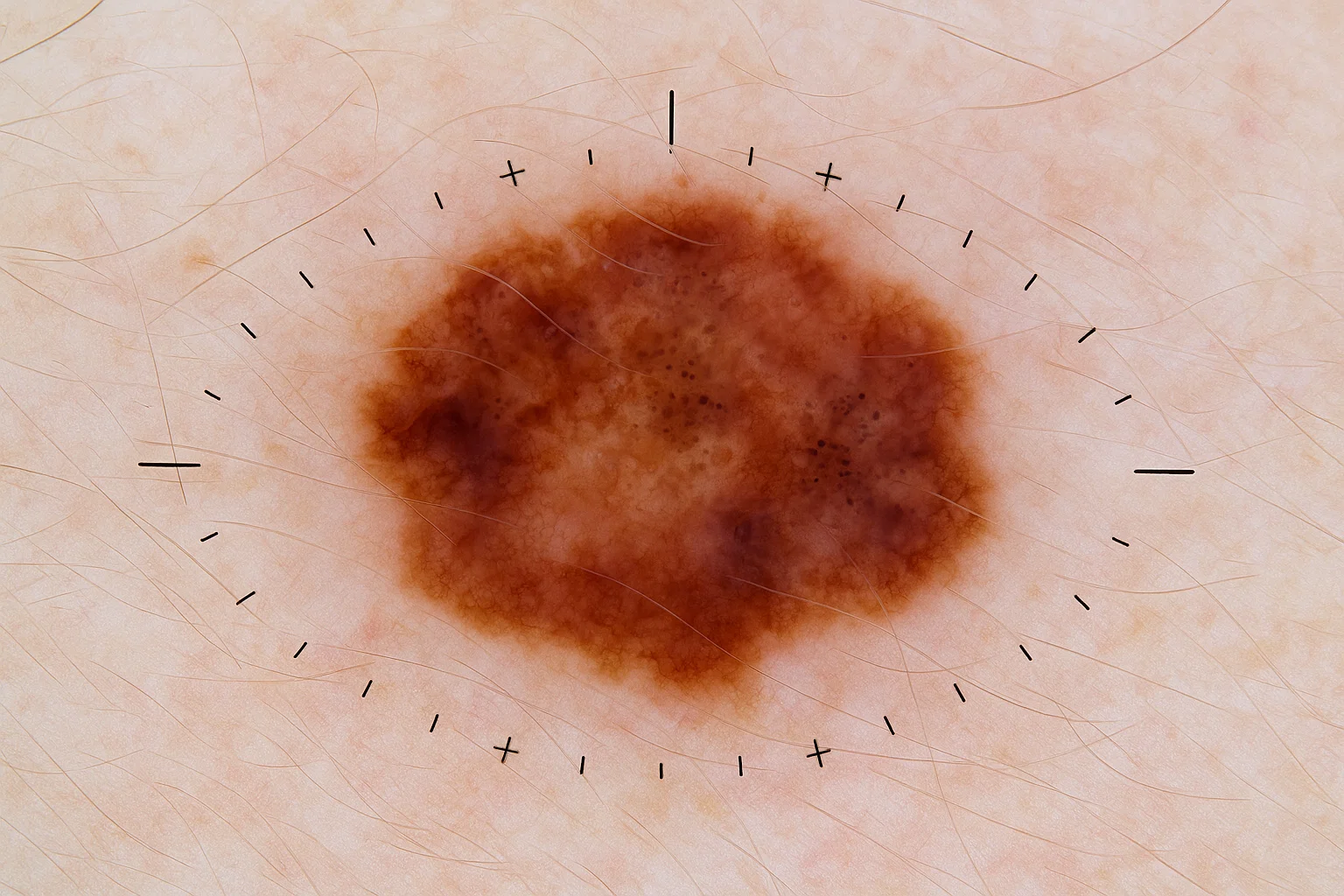Calls for Ukraine
Calls for Europe
Calls for USA
Skin condition is an important indicator of a person’s overall health. Regular monitoring of skin changes allows for timely detection of various abnormal processes and prevention of the development of serious diseases.
Malignant skin tumors pose a serious threat to health. Melanoma, which is the most aggressive form of skin cancer, can develop from ordinary moles. Without timely diagnosis and treatment, this disease can lead to metastasis and an unfavorable prognosis. This is why medical professionals strongly recommend regular skin examinations.
Statistical data shows that early detection of skin abnormalities significantly increases the effectiveness of treatment. When a malignant tumor is detected in its early stage, survival rates can reach 95-98%. This highlights the importance of moles mapping in medicine.

Digital dermatoscopy is a modern diagnostic method based on the use of specialized optical equipment for a detailed study of the skin structure (mole scan). This technology enables dermatologists to study the morphological characteristics of skin lesions with high magnification.
The dermatoscope works on the principle of polarized light and an optical system that allows visualization of the deep layers of the epidermis and the upper layers of the dermis. This makes it possible to detect features of various skin lesions that are invisible during a full body scan for moles, which is a standard visual examination.
Digital dermatoscopy offers a high level of diagnostic accuracy. The method allows doctors to distinguish between benign and potentially malignant lesions with up to 90% precision. In addition, the images obtained are stored digitally, enabling dynamic monitoring of skin changes over time.
Skin mapping (also referred to as a “skin passport”) is a comprehensive method of documenting and organizing all pigmented formations on a patient’s body. This process involves creating a detailed map that marks the location, features, and characteristics of each mole.
Modern moles mapping systems use specialized software that automatically analyzes the received images and creates a three-dimensional (3D) model of the patient’s body. The precise location of each lesion is marked on this model, along with a detailed description of its morphological features.
Mole scanning is performed in stages. First, standardized photographs of the entire body surface are taken. Each pigmented lesion is then photographed separately using a dermatoscope. The collected data is processed by a special program, which creates a digital map of the patient’s skin.
This approach provides an objective evaluation of lesion changes over time. A doctor can compare current images with previous ones and identify even minor changes in the size, shape, or color of moles.

Mole checking begins with a detailed medical history. The doctor assesses risk factors, family history of skin cancer, and also clarifies the patient’s complaints.
The initial examination includes a visual assessment of the entire skin surface under good lighting. The doctor pays attention to the size, shape, color, symmetry, and clarity of the boundaries of each lesion. Special attention is given to moles that differ from others in their appearance.
The next step involves using a dermatoscope to examine suspicious lesions in detail. The device allows the physician to see the internal structure of a mole, assess pigmentation, and identify features that may indicate whether the nevus is benign or malignant.
To prepare for your visit to the dermatologist, it is recommended to avoid sun exposure and tanning for a few days beforehand. Do not apply cosmetics to your skin, especially in the area where moles are located. Women are advised to remove nail polish, as changes in the nail plate can also be a sign of melanoma.
Differential diagnosis between benign and malignant skin lesions is based on the assessment of specific morphological characteristics. The ABCDE rule is commonly used to systematize diagnostic criteria, which includes an assessment of A – asymmetry, B – borders, C – color, D – diameter, and E – evolution of the mole.
Malignant moles are characterized by an asymmetrical shape where one half of the formation differs significantly from the other. The borders are usually irregular, blurred, or jagged. The color may be uneven, containing various shades of brown, black, red, or blue.
The diameter of malignant lesions generally exceeds 6 millimeters. One of the most important warning signs is change over time – growth in size, alterations in shape or color, or the appearance of bleeding or ulceration.
Benign nevi usually have a regular, symmetrical shape with smooth, well-defined borders. The color is uniform, most often brown in various shades. The size remains stable and rarely exceeds 6 millimeters. Such moles do not change over time and do not cause discomfort.
You should immediately consult a doctor if the following symptoms appear: a rapid increase in the size of a mole, a change in its shape or color, the appearance of itching, pain, or bleeding, the formation of crusts or ulcers on the surface.
Systematic monitoring of the condition of the skin ensures early detection of abnormal changes at the stage when treatment is most effective. Modern diagnostic methods make it possible to detect malignant lesions even before the appearance of clinical symptoms.
Preventive examinations help reduce the risk of skin cancer by allowing early removal of precancerous lesions. Dysplastic nevi, which are precursors to melanoma, can be identified and removed before they become malignant.
Regular visits to a dermatologist not only help maintain your health but also support the aesthetic appearance of your skin. The doctor can provide recommendations for skin care, guidance on UV protection, and photoaging prevention.
Sign up for a procedure mole Checking and Skin Mapping
Fill in your details and our medical coordinator will contact you for a consultation
Pay for the ProcedureDigital dermatoscopy and mole mapping are non-invasive diagnostic methods that have virtually no contraindications or side effects. The procedures are painless and do not require special preparation or recovery period.
The only limitation may be the presence of extensive inflammatory processes on the skin during the examination, which could hinder the interpretation of results. In such cases, it is recommended to postpone the procedure until the acute symptoms subside.
It should be noted that dermatoscopy is a diagnostic method that does not replace histological examination if a malignant process is suspected. If suspicious changes are detected, a biopsy may be required to establish a final diagnosis.
How often should mole scan be performed?
For individuals with average risk, a yearly checkup with a dermatologist is recommended. Patients with higher risk factors (fair skin, large number of moles, family history of skin cancer) may require more frequent monitoring – every 6 months.
Can I use a mole scanning app instead of visiting a doctor?
Mobile apps for mole scanning can only serve as an auxiliary tool for preliminary evaluation and cannot replace professional diagnostics. Although some apps use artificial intelligence algorithms to analyze images, their accuracy is significantly inferior to a clinical examination by a specialist using professional equipment. The app can be helpful for self-monitoring and reminding you of the need for regular check-ups, but if you notice any suspicious changes, you should definitely consult a dermatologist for qualified medical assistance.
How much does skin passport creation cost and what does it include?
The price of a skin passport (full body scan for moles) varies depending on the medical facility and the scope of the examination. This service typically includes:
To clarify the cost of a procedure in a specific clinic, contact the MedTour coordinating physician in any way convenient for you.
Is it possible to perform dermatoscopy during pregnancy?
The procedure is absolutely safe for pregnant women, as it does not involve the use of radiation or medications. On the contrary, during pregnancy, it is especially important to monitor mole changes due to hormonal fluctuations occurring in the body.
Do all suspicious moles need to be removed?
The decision to remove a mole is made individually in each case. Not all lesions with atypical signs require immediate removal – some can be monitored over time with regular check-ups.
Does tanning affect diagnostic accuracy?
Fresh tanning can make it more difficult to assess the color characteristics of lesions and may obscure some diagnostic features. Therefore, it is recommended to avoid tanning for a few days before the procedure.
What is the accuracy of dermatoscopy diagnostics?
Modern methods of dermatoscopy allow for the correct diagnosis of malignant lesions in 85-95% of cases. However, the final diagnosis is always established on the basis of histological examination.
We are always happy to help you. Write your question by filling out the form. We are happy to answer all your questions.
Please rate the work of MedTour
